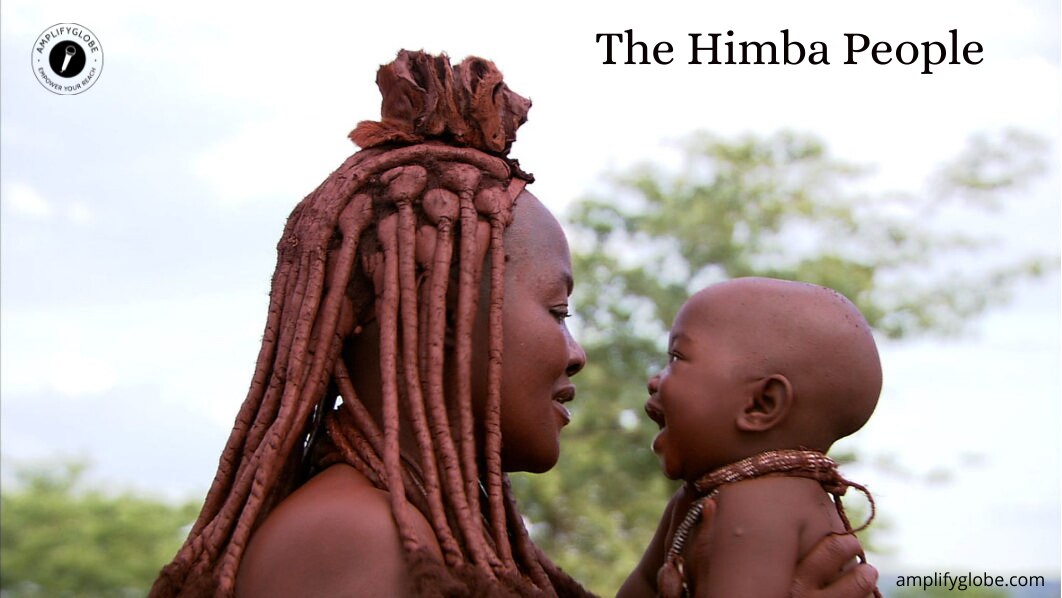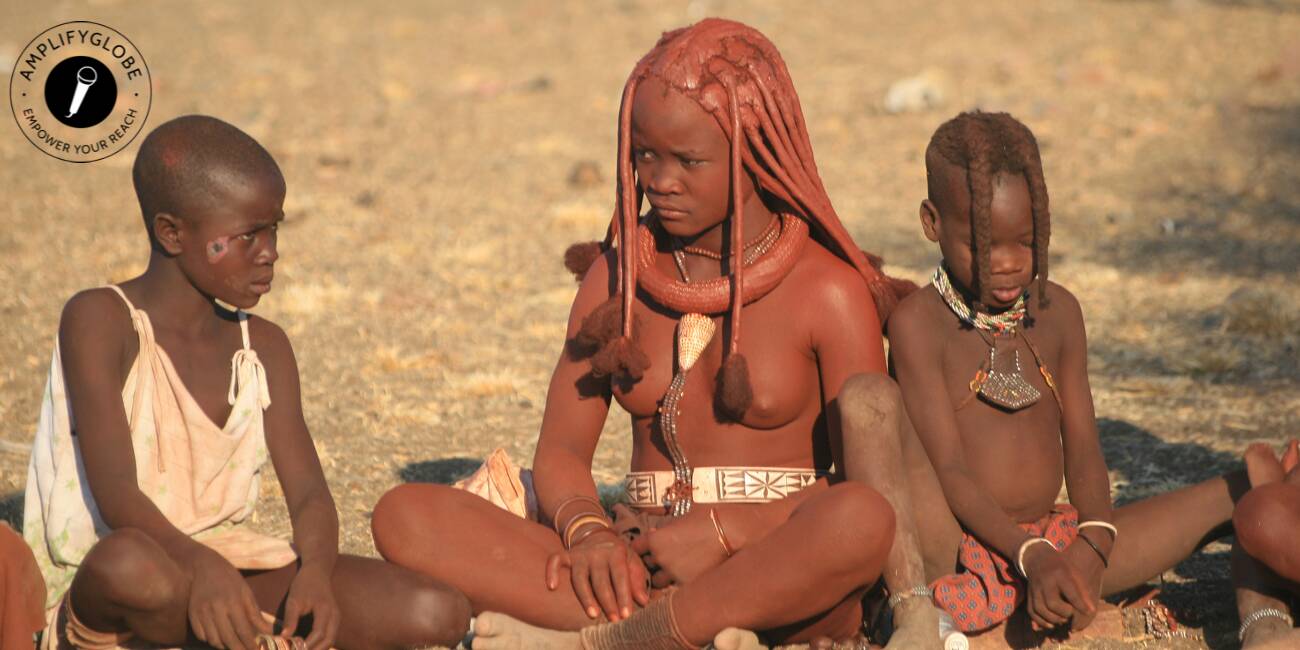Himba People - A Glimpse into Namibia's Cultural Jewel
In the vast landscapes of Namibia, nestled against the rugged terrains of the Kunene region, resides a unique and resilient community - the Himba people. Their distinct way of life, characterized by vibrant traditions and a deep connection to the land, has captivated the curiosity of anthropologists, travelers, and cultural enthusiasts alike. In this comprehensive exploration, we delve into the multifaceted world of the Himba, unraveling the threads of their cultural tapestry, and shedding light on their customs, beliefs, and the challenges they face in a rapidly changing world.
Embrace the beauty of cultural diversity and enrich your understanding of the world! Learning about different cultures is an enriching journey that broadens our perspectives, fosters empathy, and fosters respect for one another. It allows us to appreciate the unique traditions, values, and customs that shape the identity of various communities around the globe. Learn about the Hamer Tribe, the Hadza Tribe, the Sami, the Akha People, the Aymaraes, the Kazakh People and the Adivasi on AmplifyGlobe.

Historical Roots of the Himba People
To truly understand the Himba people, it is essential to trace the roots of their history. Originating from the Herero people, the Himba migrated to the northwest of Namibia, where they established a unique and enduring cultural identity. Historically, their nomadic lifestyle revolved around herding livestock and navigating the arid landscapes, showcasing their adaptability to the challenging environment.
Traditional Dwellings and Unique Aesthetics
One of the most distinctive aspects of the Himba culture is their traditional dwellings, known as 'enkangela.' These cone-shaped structures, crafted from a mix of mud, animal dung, and straw, reflect the ingenious architectural techniques honed over generations. The Himba's nomadic lifestyle is mirrored in the design of these huts, which can be easily assembled and disassembled as the community moves in search of grazing land.
Furthermore, the Himba are renowned for their use of ochre, a natural pigment derived from iron-rich soil. Ochre holds profound cultural significance, symbolizing the earth's connection to life. The Himba people apply this distinctive red paste to their bodies, creating intricate patterns that serve as a visual language, communicating age, social status, and even marital status. This unique aesthetic practice not only distinguishes the Himba from neighboring communities but also serves as a testament to their deep-rooted connection with the earth.
Social Structure and Communal Harmony
Central to the Himba way of life is a communal ethos that permeates every facet of their society. The community operates on a system of extended families, with each member playing a crucial role in the collective well-being. Social hierarchies are defined by age and experience, with elders holding a revered status as the custodians of wisdom and tradition.
Transitioning seamlessly between the physical and metaphysical, the Himba's spiritual practices are an integral part of their daily lives. This connection to the unseen world not only provides solace in times of adversity but also reinforces the sense of unity within the community.

Spiritual Practices and Ancestral Reverence
The spiritual tapestry of the Himba people is woven with threads of ancestral reverence and a profound connection to the metaphysical realm. At the heart of their spiritual practices is the veneration of ancestors, whose spirits are believed to guide and protect the living. Rituals, encompassing dance, song, and the burning of sacred herbs, serve as conduits to the spiritual realm, fostering a spiritual continuity that transcends generations.
Transitioning seamlessly between the physical and metaphysical, the Himba's spiritual practices are an integral part of their daily lives. This connection to the unseen world not only provides solace in times of adversity but also reinforces the sense of unity within the community.
Challenges Amidst Change
Despite the Himba people's resilience and steadfast adherence to tradition, the winds of change have begun to blow across the Kunene region. Modernization and external influences pose a formidable challenge to the preservation of their unique way of life. The encroachment of Western values and economic pressures create a complex backdrop against which the Himba must navigate.
One of the most pressing challenges is the impact of tourism on their cultural integrity. While tourism presents economic opportunities, it also exposes the Himba to the risk of exploitation and the dilution of their cultural authenticity. Striking a delicate balance between economic development and cultural preservation is an ongoing struggle that requires thoughtful consideration and collaboration.
Educational Endeavors and Empowerment
In the face of these challenges, initiatives have emerged to empower the Himba people through education. Recognizing the importance of preserving both cultural heritage and equipping the younger generation with the tools to navigate a changing world, educational programs have been introduced.
These programs aim to blend traditional knowledge with contemporary skills, fostering a sense of pride in the Himba identity while providing avenues for economic self-sufficiency. By embracing education as a catalyst for empowerment, the Himba people are navigating the delicate balance between preserving their rich heritage and embracing the opportunities that the modern world presents.
Sustainable Development and Conservation
Integral to the preservation of the Himba way of life is the promotion of sustainable development and conservation efforts. The Himba's nomadic lifestyle, deeply intertwined with the natural environment, relies on the delicate balance of ecological harmony. As external pressures mount, there is a growing awareness of the need to implement measures that safeguard both the Himba people and the pristine landscapes they inhabit.
Collaborative efforts between governmental bodies, non-governmental organizations, and the Himba community itself are crucial in charting a sustainable path forward. By combining traditional ecological knowledge with modern conservation practices, there is hope that the Himba people can continue their centuries-old relationship with the land without compromising the delicate ecological balance.
Summary
In the heart of Namibia's rugged landscapes, the Himba people stand as custodians of a cultural legacy that has weathered the sands of time. Their unique way of life, characterized by communal harmony, spiritual depth, and a profound connection to the land, offers a glimpse into a world that exists at the intersection of tradition and modernity.
As we navigate the intricacies of the Himba people's story, it becomes evident that their resilience in the face of change is not merely a testament to the past but a roadmap for the future. Balancing tradition and progress, spirituality and pragmatism, the Himba people illuminate a path towards cultural preservation and sustainable development that resonates far beyond the borders of Namibia. In embracing their story, we find inspiration to weave a future that honors the rich tapestry of diversity that defines our global heritage.